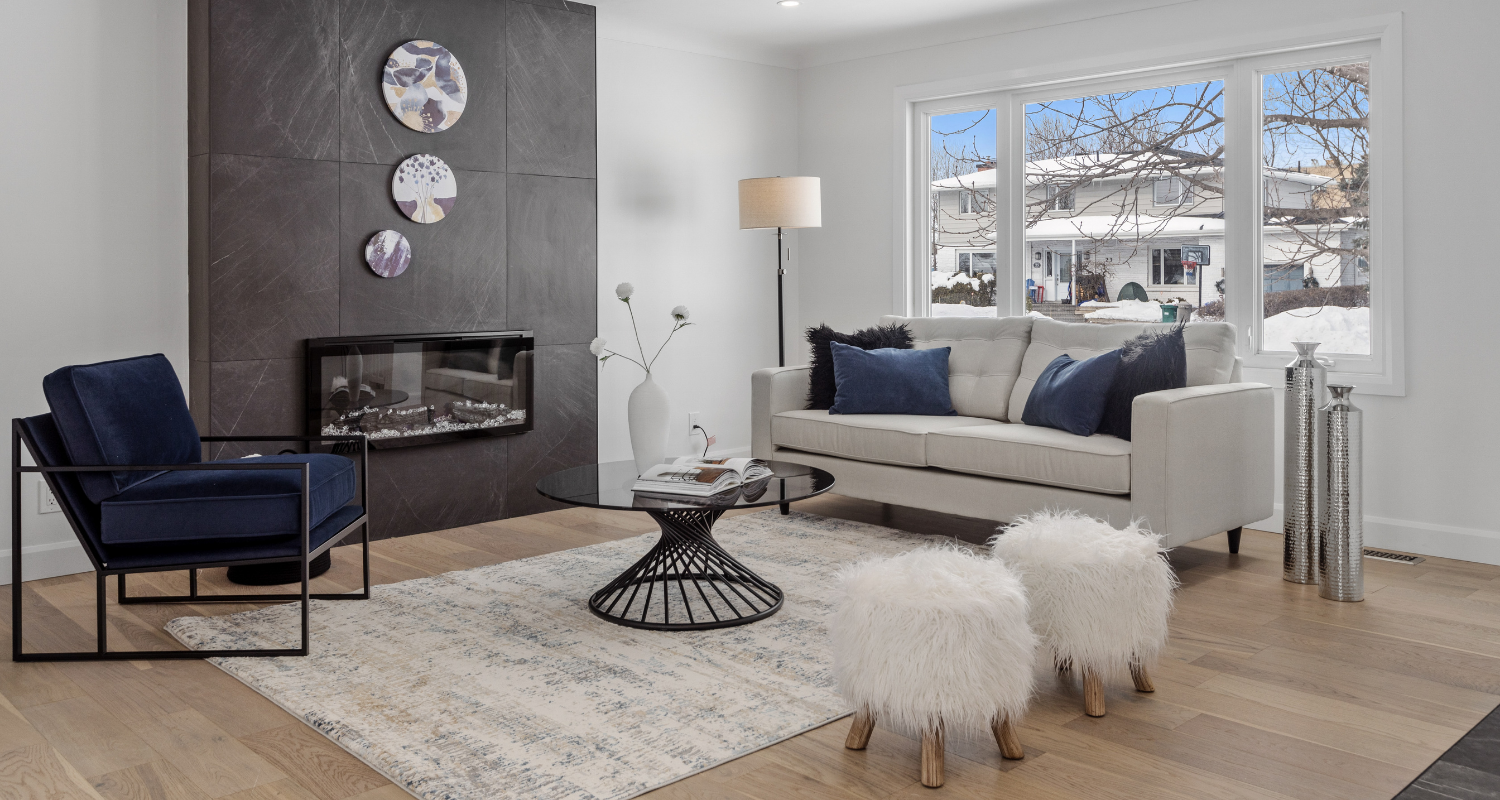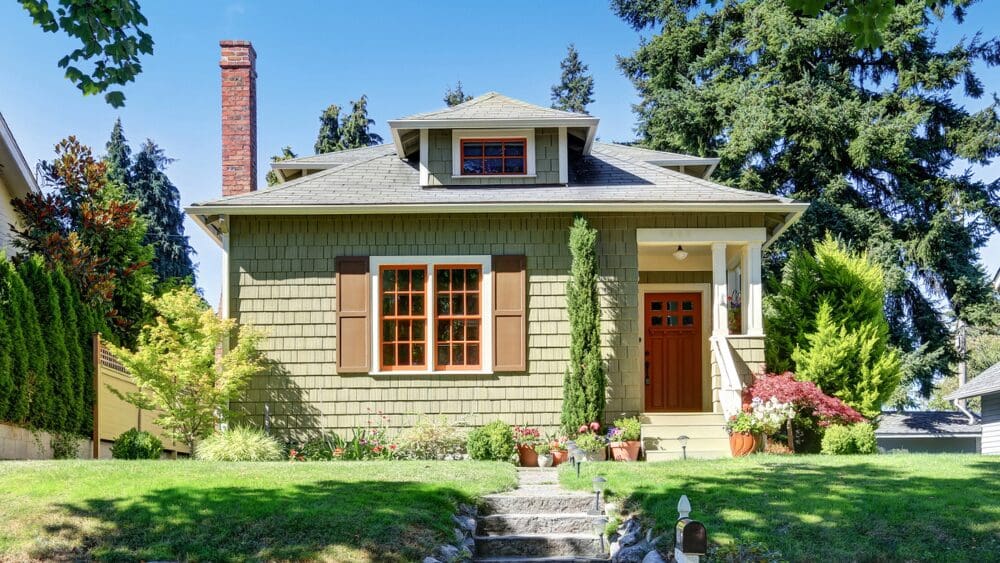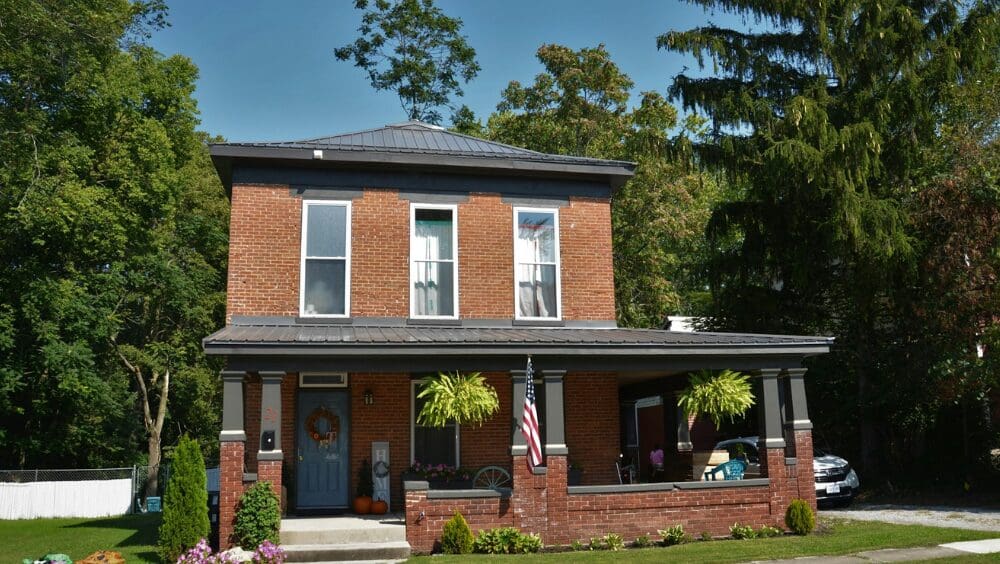
Selling your home in 2022? We’ve put together a guide on how to market your house for sale with all the modern trimmings in mind. Beautiful photos with adequate lighting, a storybook description, and online visibility have long been key tenets of effectively marketing a home and you’ll need to cover the basics. In marketing a house today, you can also tap into changing buyer preferences since the pandemic to help your listing grab attention. Homes are selling like hotcakes right now, but that’s especially true for dwellings with the stuff everyone wants: think Zoom rooms and backyard pools, flex space and plenty of square footage. “Recently, as homes have become kind of a sanctuary, buyers want to upsize, so their home fits their lifestyle,” says Andrew Robinson, a top real estate agent in Columbus, Ohio. “They want to make their homes a place where they can work, workout, and entertain.” Real estate agents are marketing aficionados so if you’ve hired a great one, they will take charge of your marketing plan. If you’re selling a house by owner, these are the marketing priorities you’ll need to consider to find a buyer. Either way, it’s helpful to be educated on the process. So let’s take a look at how to market your listing like the prettiest gift under the Christmas tree.
You could have the glossiest listing in the market and still have a hard time selling if you don’t take care to set the right asking price. To quickly get an idea of your home’s value in the current market, you can fill out a short questionnaire and HomeLight’s Home Value Estimator will provide you with a preliminary estimate in under two minutes for free. Think of this tool as a starting point to get oriented with price trends in your area. Follow up your estimate with a comparative market analysis (CMA) from your real estate agent.
A CMA takes into account the price of recently sold properties in your area with similar square footage, overall condition, and number of bedrooms and baths. The agent also factors in recent upgrades and unique selling points like water views or extra land. Note: If you haven’t hired a real estate agent yet, HomeLight would be happy to introduce you to some highly qualified candidates in the area. Our data shows that the top 5% of real estate agents sell homes for as much as 10% more. Get matched with a top agent today and ask about getting a free CMA. Pricing a house correctly is considered by many agents to be the most important element of a marketing strategy. Price too high and your house could sit on the market too long and eventually sell for less. Price too low and you could undersell it and forfeit significant value. One study found homes with high-quality photographs sell 32% faster than those without visuals. In fact, imagery is so important most agents have photographers on their list of preferred contractors. To get the maximum punch per pixel, listing photos need to be magazine quality — taken at the most flattering angles and staged and lit to perfection. Timing is also important. “I insist upon taking exterior photographs of when the house is in its best condition,” Robinson says, “which is typically May through September.” That tactic takes on special significance if you plan to enter the market in the winter of a region that’s snow covered for part of the year. “You want to take extra pictures when the pool is open, so people don’t have a question about what that looks like,” Robinson says. The easiest way to get quality photos is to hire a professional, which your agent will arrange for. But, if you have patience, time, a great eye and a DSLR camera and tripod — because no iPhone is up to the job — you can develop technique and have a shot at producing passable photos.
The listing description is text that appears alongside the images of your home. It’s usually about a paragraph long and intended to share details about the property that may not otherwise be gleaned from the other fields. So no need to restate the number of beds and baths or year the home was built. This is your shot to tell your home’s story. Photos draw buyers in, while your description helps to stoke further excitement. “I will always point out things that are desirable,” says Mary Jo Santistevan, a top real estate agent in Phoenix. “If the house borders on a waterfront, golf course, or a nature preserve, and if it’s conveniently located to freeways or top-ranked schools,” she says, “that needs to be in the listing description.” You want to paint a picture in the buyer’s mind about what makes your house special. Maybe, it’s a mid-century modern with the original terrazzo floors or a craftsman cottage within walking distance of campus. HomeLight’s experts have sharpened their pencils to give you the cliff notes on the best advertising words to sell your home and steps to write a creative listing. COVID-19 cases may wax and wane, but it appears the work-from-home trend is here to stay. According to a recent survey of HomeLight agents, the top wish list item buyers search for is now a home office. Nearly 60% of respondents identified the feature as a top priority for clients in their market, more so than any other feature listed. “So many kids are doing zoom school and so many adults are working from home,” says Robinson. “That has inspired many sellers to take a second bedroom and turn it into a second home office.” Some buyers are seeking out homes with multiple office spaces to support both partners working from home. If you’re already using a room as an office, tidy it up, make sure it’s photographed, and be sure to feature it prominently in your listing. If not, consider staging a small bedroom, bonus room, or alcove of the house as a place where someone could comfortably work. It doesn’t have to be fancy, but the mere suggestion will help buyers envision the home having what they need. For more ideas, see our complete guide on staging a home office with suggested furniture links and organization tips. Since the pandemic, Americans have embraced the outdoors like never before as a place to relax, gather, and entertain. Like the home office, outdoor living areas now rank among the top three homebuyer priorities. HomeLight research shows that features such as pools, outdoor structures like decks and outdoor kitchens, and features such as fire pits have all increased in demand and value. While a cursory mention of these amenities may have been yesterday’s way to market a home for sale, in 2022 you’ll want to shout these amazing additions from the rooftops. That means making sure to include photographs of outdoor spaces at a minimum, and perhaps even considering drone footage or an aerial listing if your home has an amazing backyard. Going back to the listing description, outdoor features are now a major selling point to incorporate. As inflation hits an alarming 8% in 2022 and the cost of basic utilities such as power and gas increases, Americans are looking for long-term ways to save on housing costs. According to HomeLight’s research, 47% of real estate agents have noticed homebuyers prioritizing energy-efficient features in their home search. Our survey found buyers are more interested in whether a home’s windows are ENERGY STAR certified than the status of thermostats, appliances, and water heaters. Buyers also appreciate energy upgrades such as sufficient insulation, LED or CFL lighting and proper weather stripping. In the Pacific, 54% of agents see solar panels as the biggest energy-efficient draw. No matter where you live, shining a light on your home’s energy efficiency could illuminate its potential for eco-conscious buyers. While real estate listing sites often include a map to show where your property is located, your marketing should make it easy for buyers to learn what’s nearby and how convenient it would be to live there. HomeLight’s 2022 Buyer and Seller Insights report found that the top location-related features in a buyer’s home search include nearby necessities such as gas stations and grocery stores (49%); a walkable neighborhood (35%); a quality school district (31%); proximity to work (30%); and proximity to restaurants and shopping (24%). Other location aspects worth mentioning may include: And any other location features unique to your home! “When you look at photographs of homes, sometimes it’s hard to understand the relationship of one room to the next — how that transition happens,” Robinson explains. “We do 3D tours on $2 million houses and $200,000 houses, because we want buyers to experience what it feels like to walk through the house.” If you’re selling in a college town, major city or other market with a large number of relocation buyers, Robinson says the ability to provide virtual experience can seal the deal. For example: If one spouse is in your town interviewing for a job and house hunting, the other may be in another state or country. “An out-of-town spouse usually feels more comfortable putting in an offer if that person has experienced the house through a 3D tour rather than just seeing static images,” Robinson says. A 3D tour is both easy for the technologically savvy person to use and very phone friendly. But, its advantages don’t appeal to all demographics. “If I were showing a listing to my mother,” Robinson says, “it would be better for her to experience that house with the video.” That’s why Robinson advocates a multimedia approach to marketing. To reach the largest audience, a home’s data, photos and description are uploaded on the listing the Multiple Listing Service (MLS), a local or regional database cooperating real estate brokers use to share data and information about properties for sale. “When a home goes into the MLS, it’s syndicated to all of the other real estate websites,” says Santistevan. Your agent posts on a public-facing MLS listing should populate on Zillow, Realtor, Trulia and Homesnap as well. Beyond those basics, Robinson uses MLS’ Coming Soon platform to maximize his multimedia approach. By posting digital media seven to 10 days before scheduled showings, “We get the exposure to the maximum number of consumers,” he explains, “and they start stacking up appointments for the first day that house is active.” Frequently, “all of that listing activity creates a fear of loss,” Robinson says. “When buyers walk in, they see the other consumers in the house, and they’re ready to write an offer on this house.” Savvy real estate agents are well-versed in using social media channels for real estate to generate buzz and raise your home’s visibility in your area. Complement your agent’s social media strategy with your own. The more you can promote your house on your social media, the more exposure it will have. The Pew Research Center’s Social Media Use Survey shows: In the last year, 81% of U.S. adults have used YouTube; 69% used Facebook; 40% used Instagram. That doesn’t even include the usage for Reddit, Twitter, TikTok, Snapchat, LinkedIn, Pinterest, Reddit and others. Even if your network’s small, it can be mighty. So, why not coordinate with your agent and share your magazine-quality home photos and videos with friends? They may have buyers in their extended networks. Sometimes you want to balance your digital-focused real estate marketing with old-school tactics such as signs, postcards, and print ads. A for-sale sign is a classic no brainer to grab the attention of any passersby. A well-timed postcard can give the neighbors advanced notice that you’re ready to sell. Besides satisfying their curiosity about the influx of cars in your driveway and strangers coming in and out of your house, a postcard presents the opportunity to share the listing and help choose their new neighbors. Santistevan also creates a high-quality flier for every home she lists. “You don’t know how many homes buyers are seeing on the same day,” she says. “When they’re reviewing the homes later, my first-class, heavy cardstock brochure with the great photos triggers a positive emotional response for those buyers.” These days, many print ad listings are part of packages that include a digital component such as Facebook or Instagram listings. Statistics from the National Association of Realtors (NAR) show that 18% of buyers — and 36% of buyers over the age of 75 and 26% of those over age 66 — gathered information from newspaper print ads or magazines in their home search. According to NAR, 53% of buyers used the information gained at an open house to make a buying decision. Beside the obvious benefit of allowing buyers to experience your home firsthand, open houses motivate you to make sure the home looks its best by setting a deadline for all repairs and improvements. They also provide your agent with constructive feedback about the property. Brokers’ open houses are another good marketing strategy. Within two weeks of a listing, your agent invites a network of select real estate brokers and agents to your home for what may be a working lunch or dinner at your home. The event includes a tour and in-depth discussions to encourage those real estate professionals to investigate whether your property is right = for their clients. A broker’s open is sometimes more lucrative than a traditional open house because it can lead to more private showings and serious offers. Robinson says it’s ideal when clients contact him six months before they plan to sell. It may seem early, but “now’s the time we can actually help clients put more money in their pocket,” he says, “because we can evaluate the home and give them a 90-day plan of action to economically get their house up to the standards for today’s buyers.” A preliminary meeting also allows Robinson to intervene before an unnecessary renovation has reached the demolition stage. For example, instead of a costly kitchen remodel, Robinson sometimes recommends fresh paint, new cabinet hardware and updated lighting. With early involvement, “We can steer sellers in the right direction to make modest improvements, which will increase their return on the back end,” he says. Never underestimate the appeal of a decluttered, well-maintained home. One of Robinson’s biggest challenges is working with clients who have lived in their home for a long time and have a lot of sentimental value associated with it. Sometimes, it’s worth taking a cue from new construction. “When you go to a builder’s model home, you notice it’s fairly sparsely furnished and everything’s bright, shiny and clean,” Robinson says. “While your home should be warm and inviting, you have to get the house clean, decluttered and presentable.” In addition, “If a buyer sees deferred maintenance in one area,” he says, “it overshadows their decision to invest the highest amount and the offer price.” One person’s ‘70s kitschy kitchen nightmare is another person’s retro dream. Just like there are classic features that never go out of style, there are other elements that are destined for the dustbin of design history. According to buyer demand, here are some the design trends Robinson sees on their way in and on their way out: What’s in: What’s out: This method of marketing a home for sale is different from all the others mentioned here so far, and it only works for sellers who value privacy ahead of maximizing exposure of their listing. Essentially, a pocket listing is an agreement between a real estate agent and seller to market a home through private connections rather than advertise it publicly. The key distinction is: The pocket listing does not appear on MLS. Instead, the listing information is retained within a brokerage and shared on an individual basis with clients who may be interested. When a seller wants to shield the sale from public knowledge for personal or legal reasons, that’s when a pocket listing may be an attractive option. However, the benefits should be weighed against possible trade-offs, such as difficulty in finding a buyer and accepting an offer below market value. A house is a hot commodity today, and appropriate marketing will only add to the demand your listing is likely to see. Be sure to cover essential steps such as competitive pricing and professional photos. Stand out by appealing to top buyer preferences today — who doesn’t appreciate outdoor dining and space to work remotely in 2022? That said, every home is different. The best marketing plan will be tailored to your unique selling points and market. Consult with a top local real estate agent for access to digital tools, a professional network, and expert opinion on what buyers are sure to love about your abode.Set a competitive price
Take professional photos
Write an enticing listing description
Stage and photograph a home office
Highlight outdoor features
Mention energy-efficient features
Sell your location
Add a virtual tour or 3-D walkthrough
Post on the MLS and major real estate sites
Use social media to your advantage
Don’t neglect physical signage, postcards and print ads
Host open houses and broker opens
Engage an agent months in advance
When you go to a builder’s model home, you notice it’s fairly sparsely furnished and everything’s bright, shiny and clean. While your home should be warm and inviting, you have to get the house clean, decluttered and presentable.
Declutter and take care of deferred maintenance
Understand more about role of decor
Request a pocket listing for privacy
Ready to market your listing?



